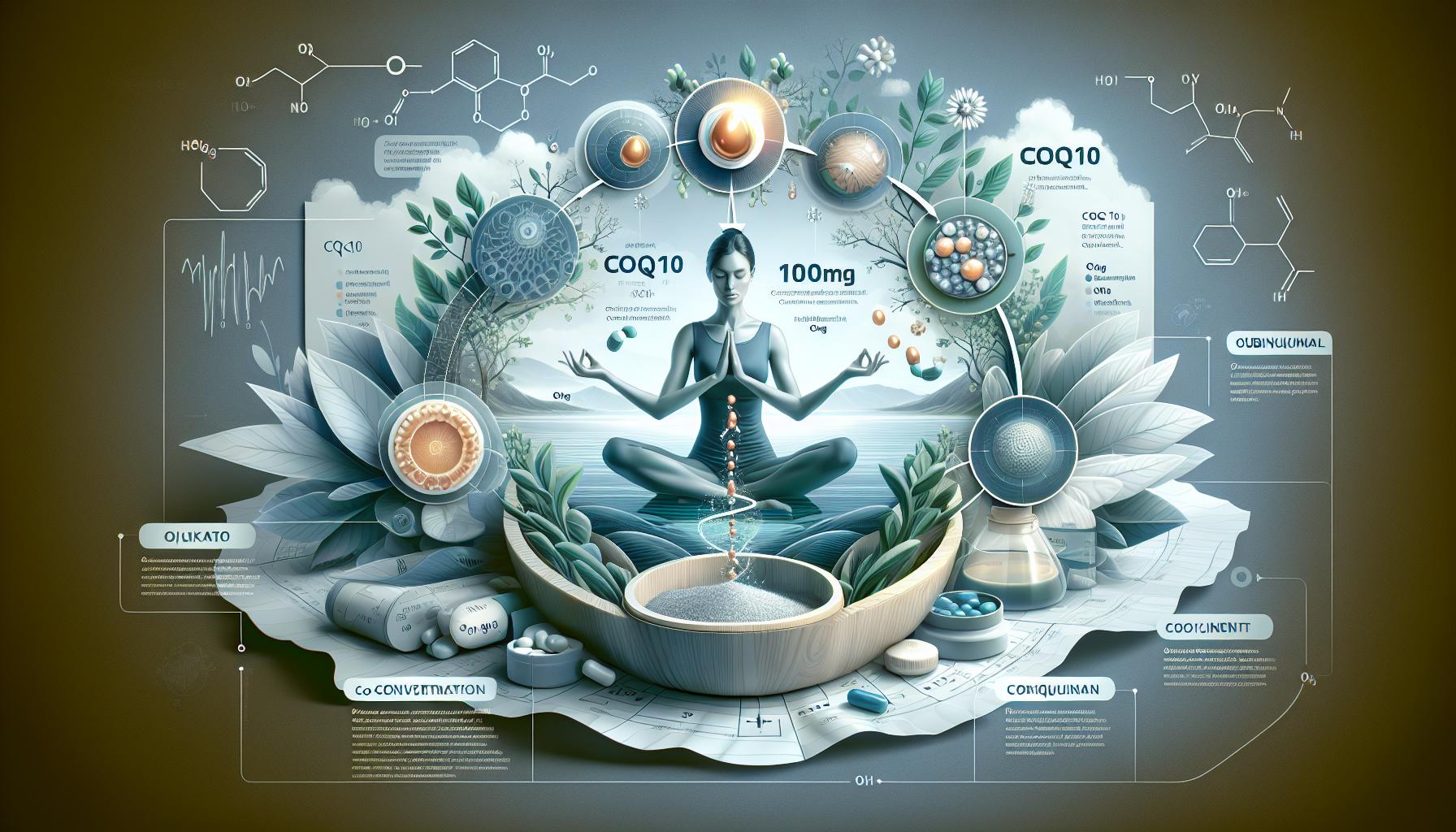
Introduction
In the complex orchestra of nutrition, Coenzyme Q10 (CoQ10) and its energia-enhancing counterpart, ubiquinol, strut the stage as stars in their own right. Both are powerhouse players in their fields, but what many keep wondering is “How much CoQ10 is needed to convert to 100mg of ubiquinol?” In the simplest sense, there’s no concrete one-size-fits-all formula, but numerous factors contribute to the conversion rate. With that said, it’s crucial we delve deeper into the symphony of these important nutrients. We’ll spotlight the significance of CoQ10 and Ubiquinol, their relationship, conversion considerations, as well as some Frequently Asked Questions.
The Role of CoQ10
CoQ10 is akin to the engine in your favorite classic car, providing the energy or fuel for your cells to function on an optimal level. It’s found in almost every cell of your body, especially in powerhouses such as your heart, liver, and kidneys. This energizing enzyme doesn’t just play the mitochondrial maestro, it also works as an antioxidant, helping to protect your body from damaging free radicals.
A Closer Look at Ubiquinol
Ubiquinol, much like the glamorous cousin of CoQ10, is its active antioxidant form, associated with supporting heart health and improving our body’s energy production. Once CoQ10 is converted in the body, it becomes ubiquinol which then circulates in the bloodstream, becoming an essential factor in cellular energy and recovery.
The Conversion Connection
Here’s where things get a tad tricky. The conversion process from CoQ10 to ubiquinol isn’t exactly an equal exchange. Shocking, right? While a general rule of thumb is nebulous, some nutritionists suggest a ballpark figure of 2:1 CoQ10 to Ubiquinol. Yet, remember our bodies are anything but cookie-cutter.
Factors Affecting Conversion
Many factors can cause this conversion ratio to be a sliding scale rather than a fixed figure. Age, overall health, the presence of chronic conditions, and individual metabolic rate could potentially influence how efficiently your body converts CoQ10 to Ubiquinol.
So, How Much CoQ10?
A clear-cut answer to how much CoQ10 converts to 100 mg of ubiquinol isn’t exactly a stroll in the park. However, given the presumed 2:1 ratio and considering individual health factors, taking around 200 mg of CoQ10 might be a good starting point for a healthy adult. However, it’s always safest to consult with your healthcare provider before starting any high-dose generation.
Benefits Knocking At The Door
Whether you’re taking CoQ10 in its original form or after its conversion to Ubiquinol, the benefits are undeniable. An induced state of better circulation, increased energy, and enhanced heart health are just the tip of the iceberg.
Conclusion
To put it in a nutshell, figuring out how much CoQ10 is needed to convert to 100mg of Ubiquinol requires a careful two-step waltz with your personal health profile and your healthcare provider’s guidance. While rough estimates exist, every body dances to the beat of its own drum.
Frequently Asked Questions
1. Can I take Ubiquinol instead of CoQ10?
Yes, you can. Ubiquinol is essentially the active form of CoQ10 that’s more easily absorbed by the body.
2. Are there any side effects of taking CoQ10 or Ubiquinol?
Side effects are rare but may include mild insomnia, digestive upsets, skin rashes, and headaches.
3. Are CoQ10 and Ubiquinol safe to take together?
The two can usually be taken safely together, but always consult with your healthcare provider first.
4. Can I boost my CoQ10 levels naturally?
Yes, certain foods like fatty fish, organ meats, and whole grains are good sources of CoQ10.
5. How long does it take for CoQ10 or Ubiquinol to work?
It might take some time to experience the full effects, typically several weeks to a couple of months.



